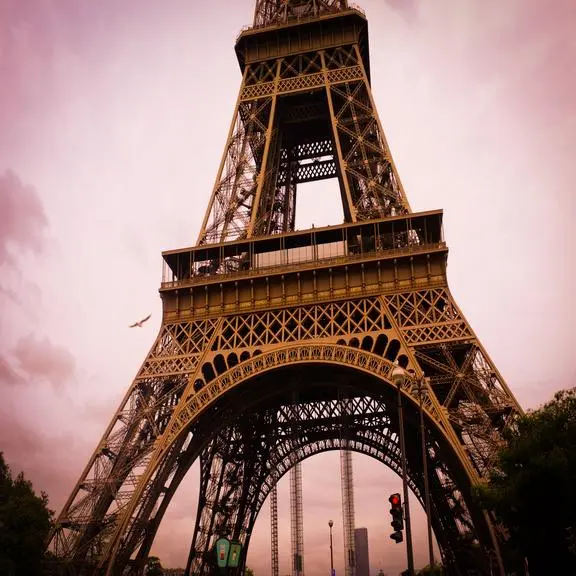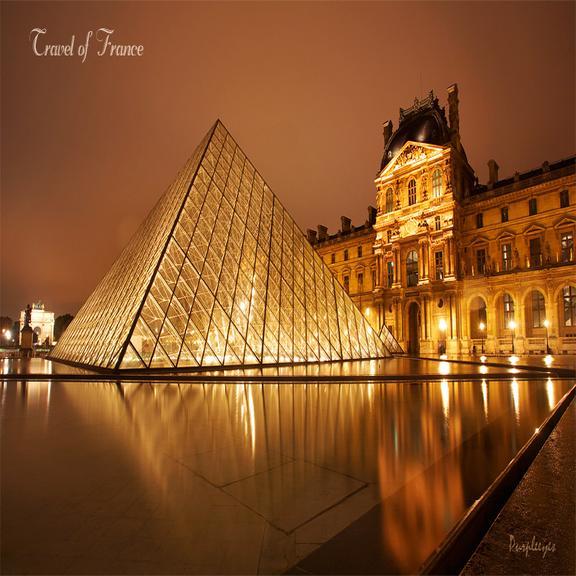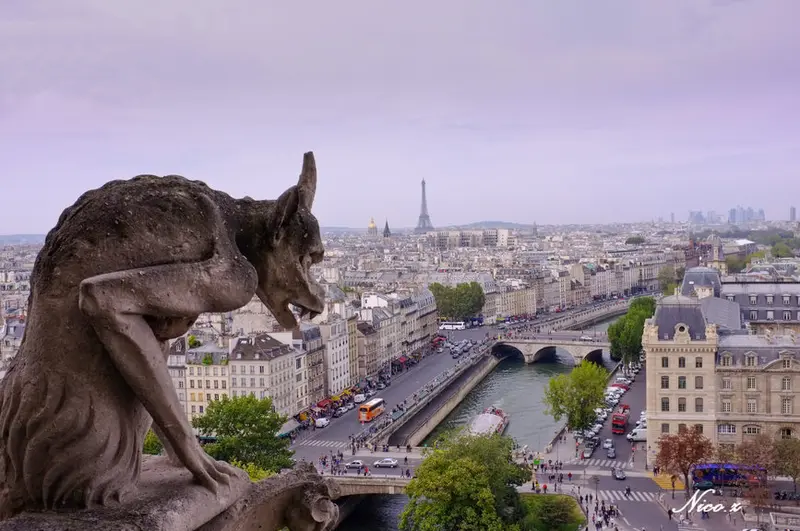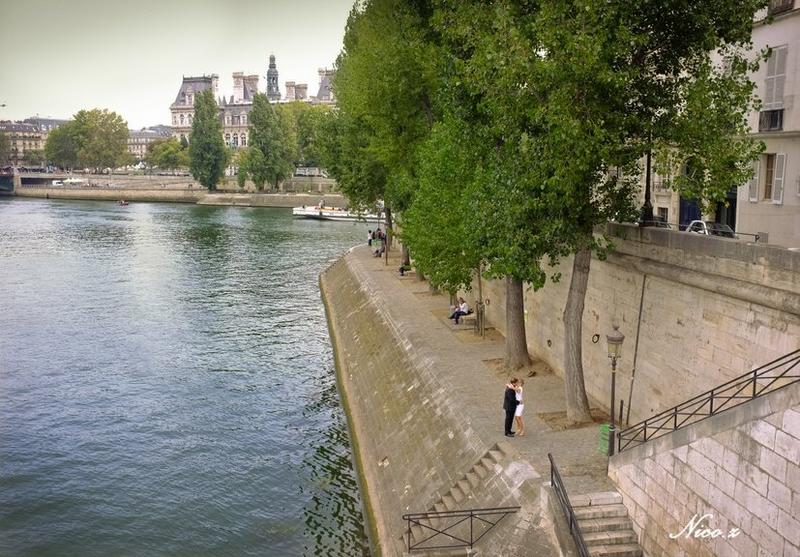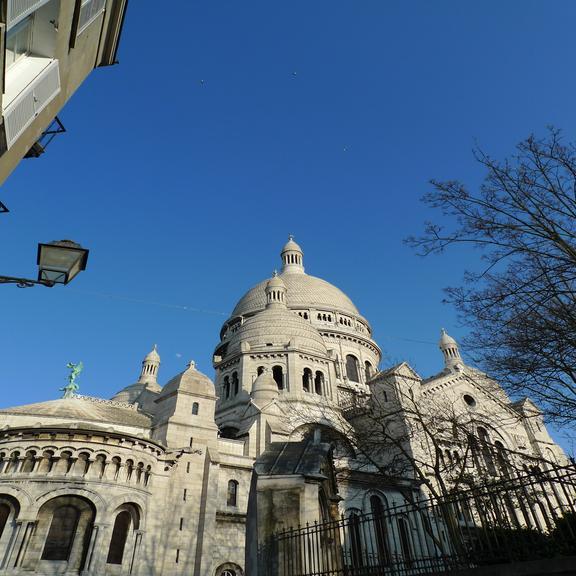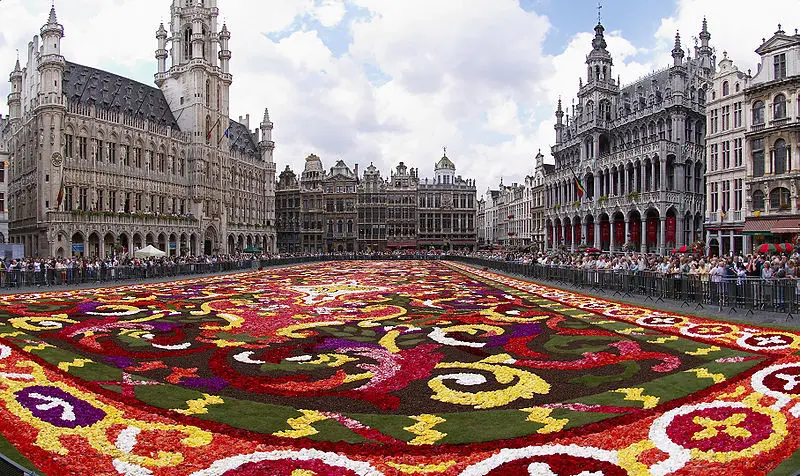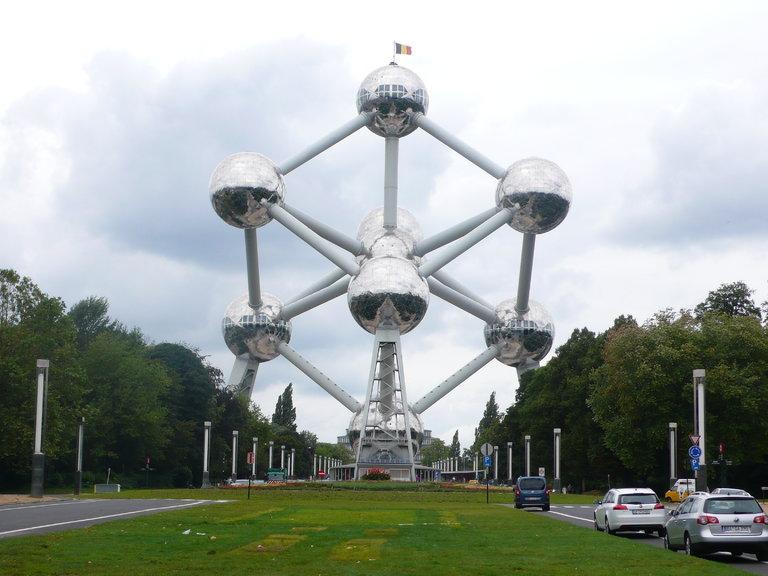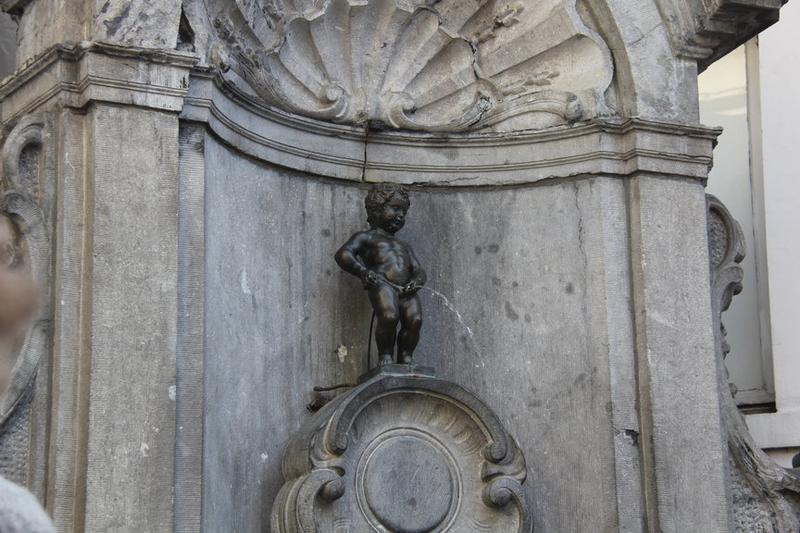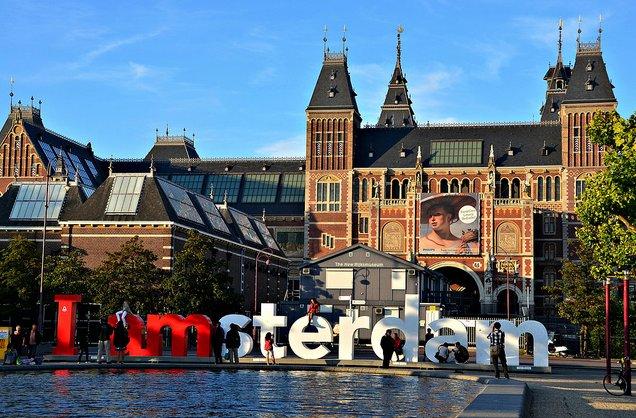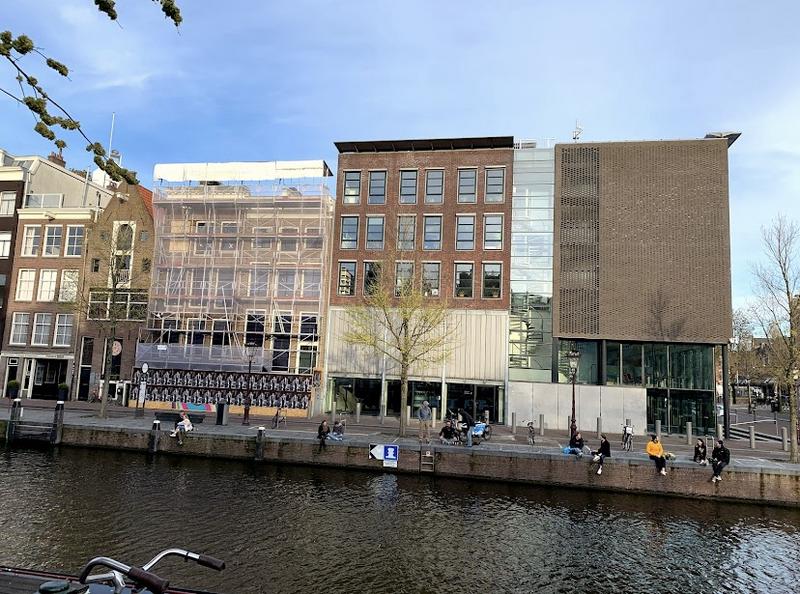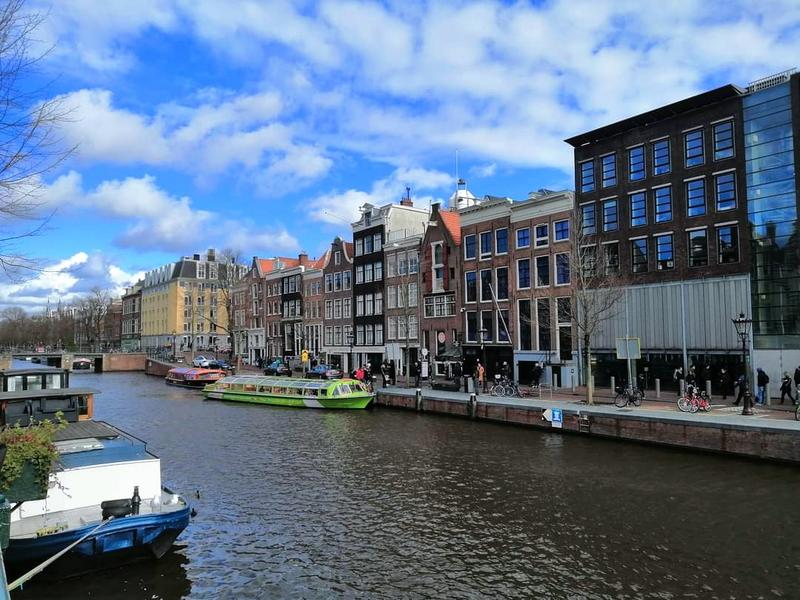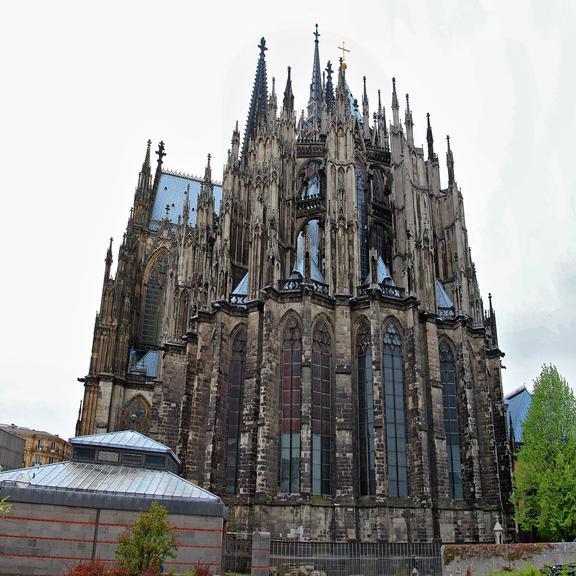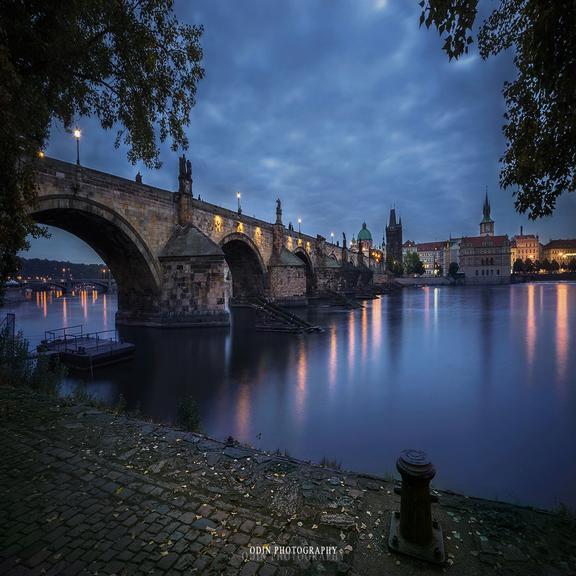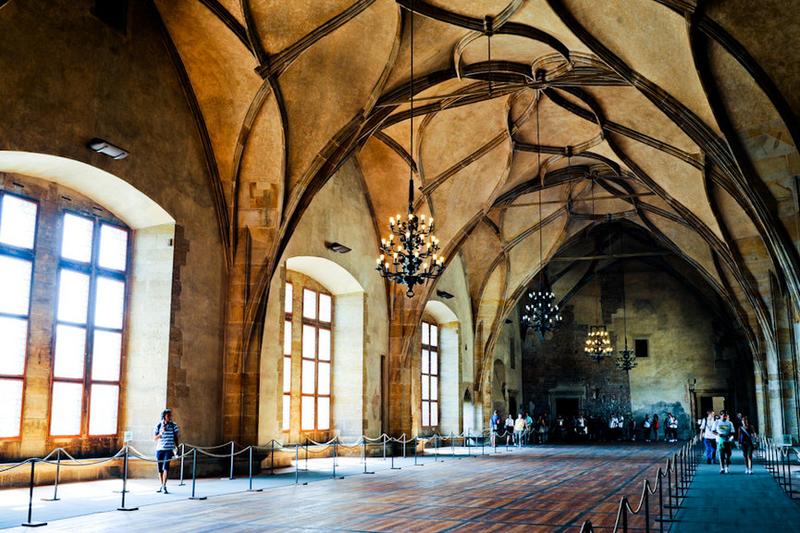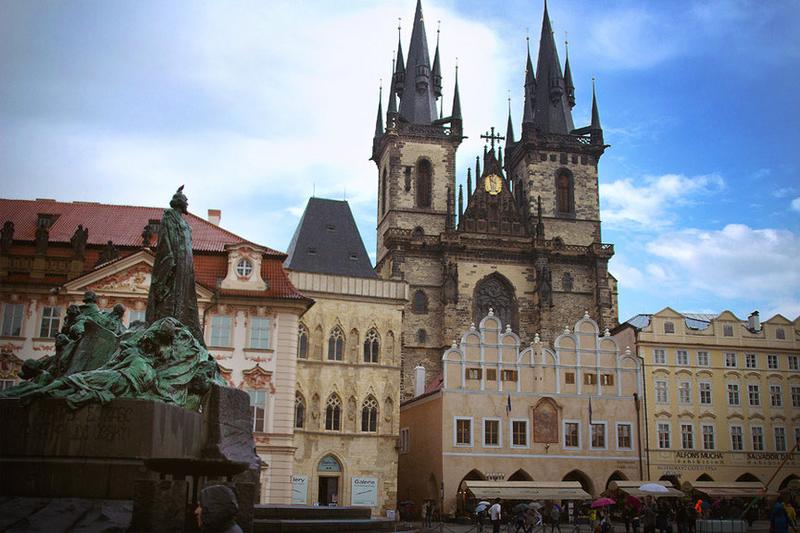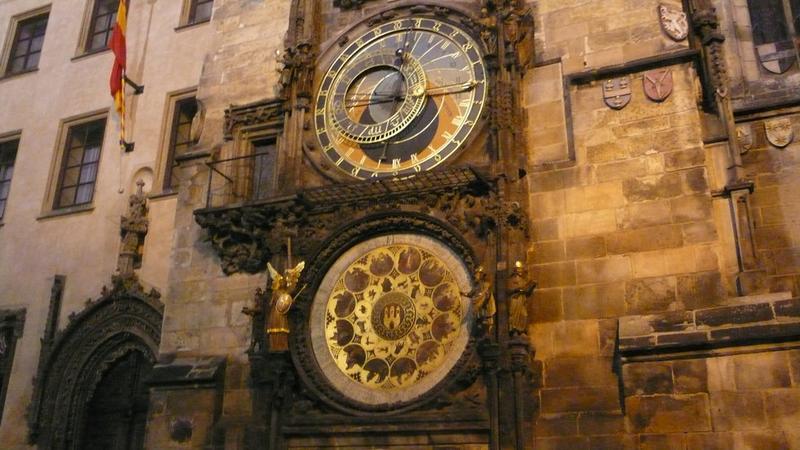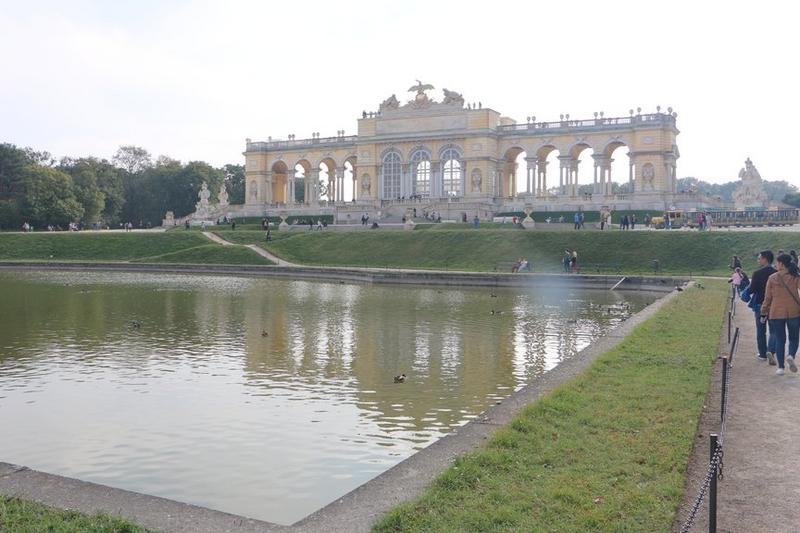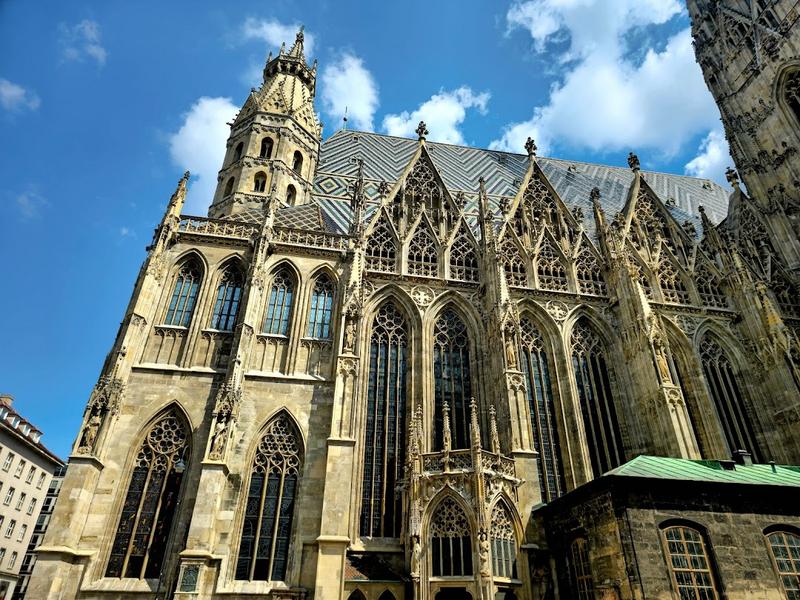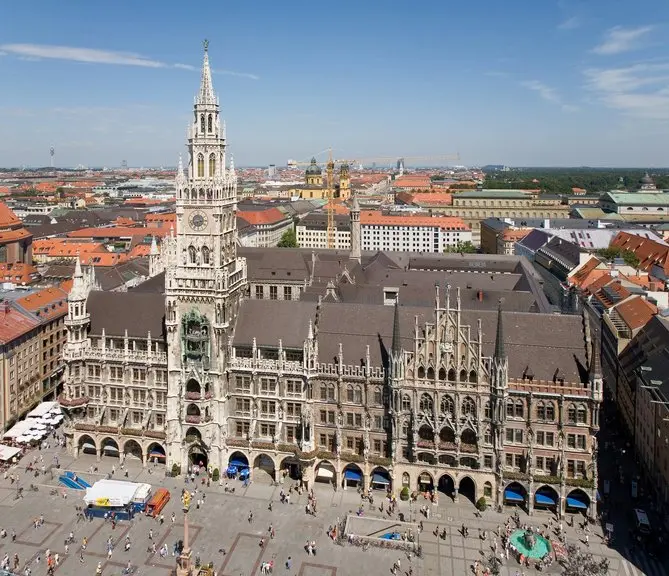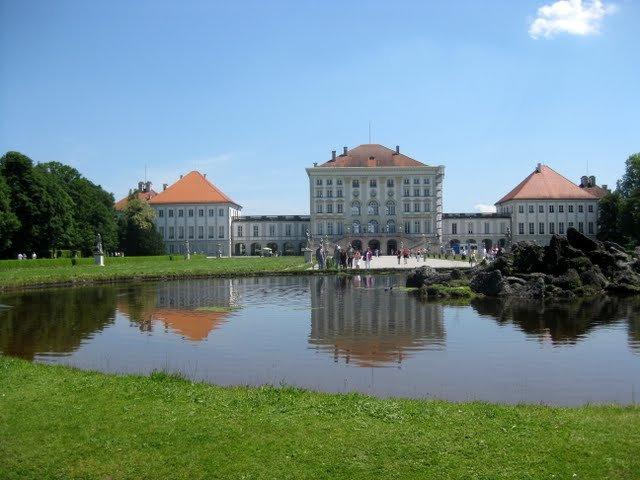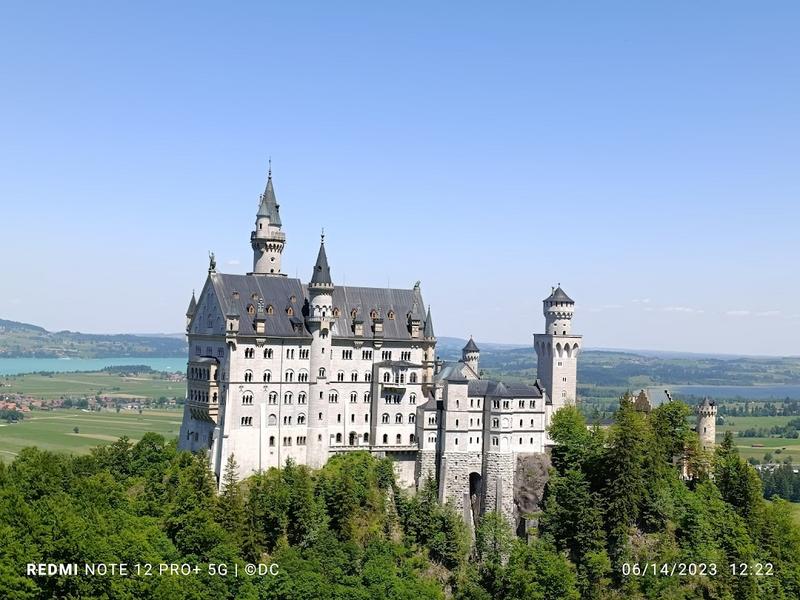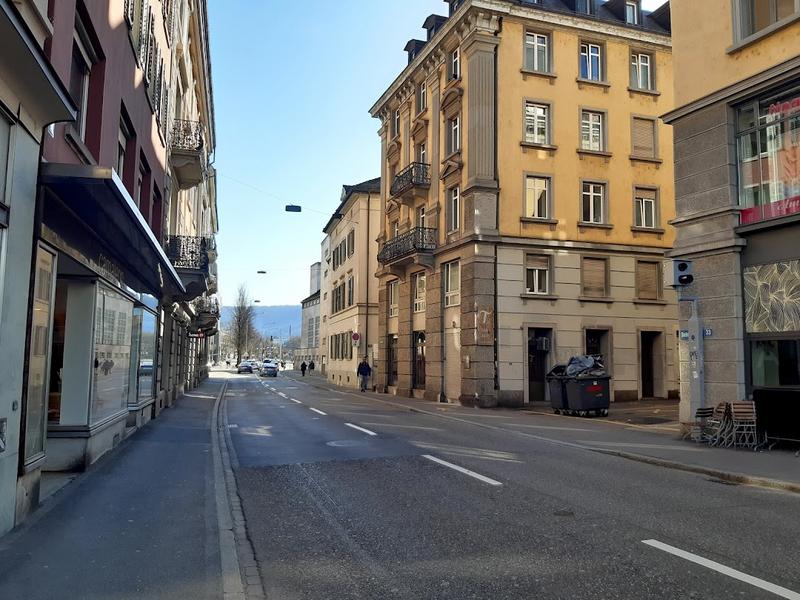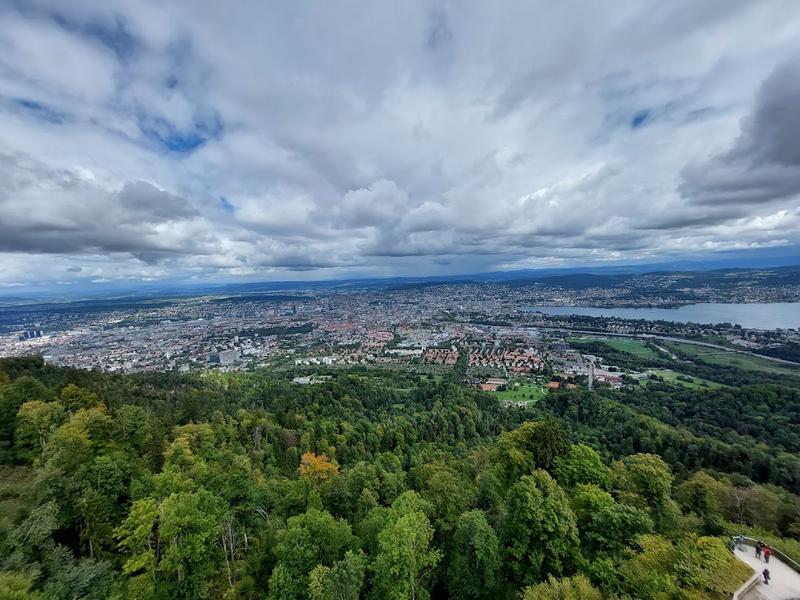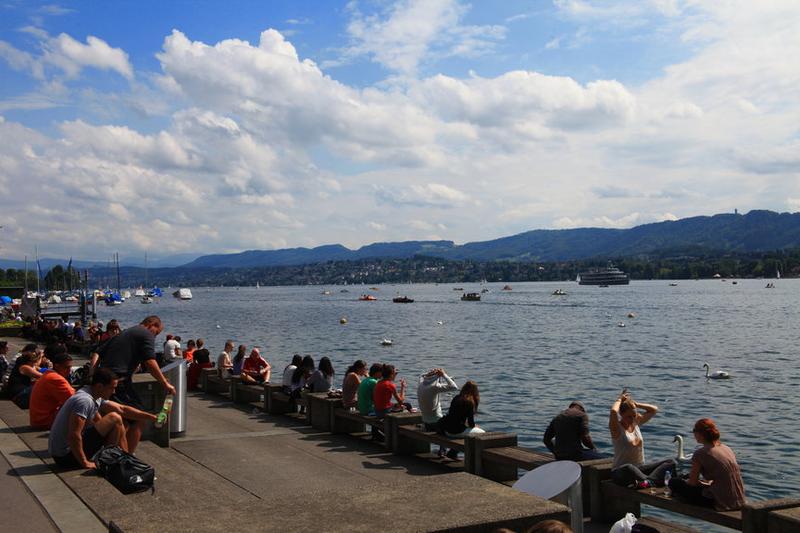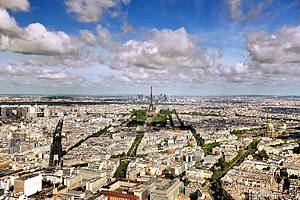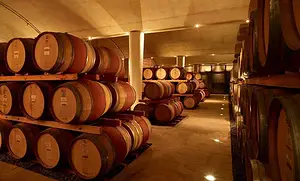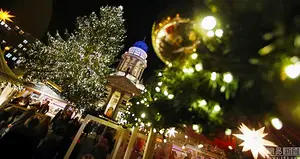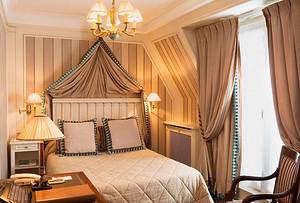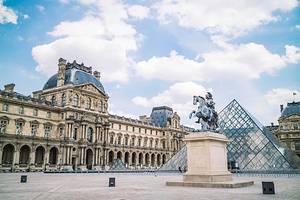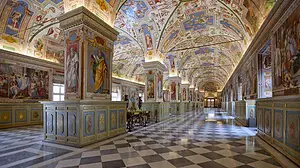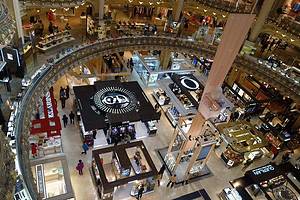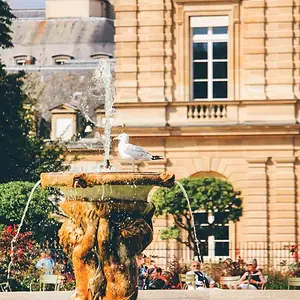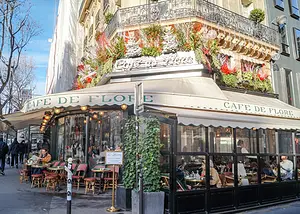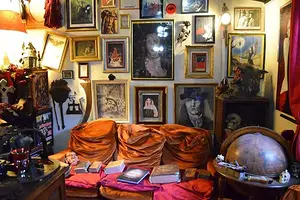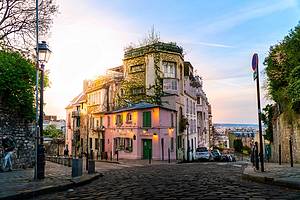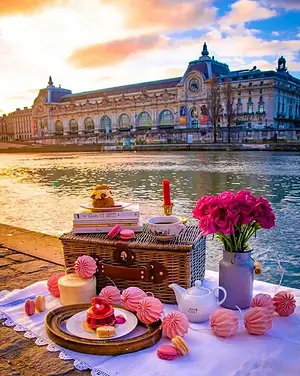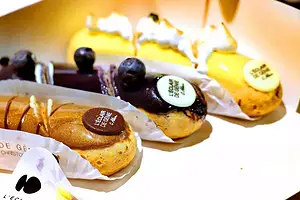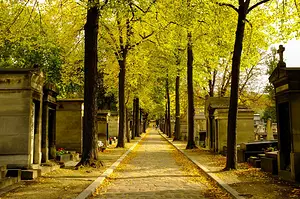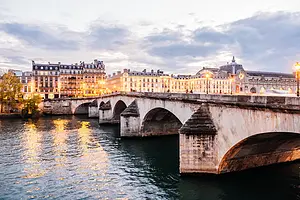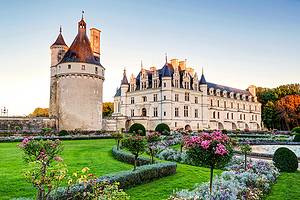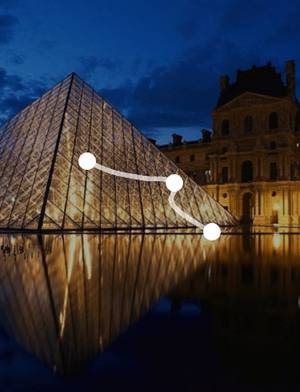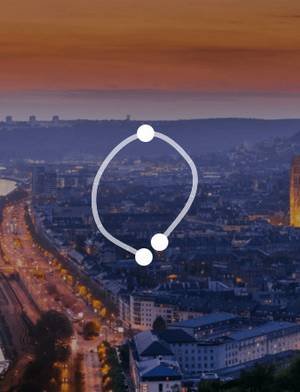Central Europe Road Trip Highlights
9 cities |
25 attraction(s) |
total distance 2094
km
 TIPS
TIPS
Day1-2
Day3-4
Day5-6
Day7-8
Day9-10
Day11-12
Day13-14
Day15-16
Day1-2: Paris
5 attraction(s) ·
9 km
1
In 1889, the Eiffel Tower was built to commemorate the 100th anniversary of the French Revolution and to welcome the World Expo. This 324-meter-tall giant steel structure was initially controversial as it clashed with the architecture of Paris, and some even called for its demolition. However, today the Eiffel Tower has become a symbol of France and Paris.
Visitors can take the elevator or climb the stairs to reach the top of the tower and enjoy the breathtaking view of the city. On New Year's Eve, the tower sparkles for ten minutes at the top of each hour, and on specific holidays, it displays different colors, such as red for the Chinese New Year and blue for EU Day. During National Day, the Champ de Mars below the tower is an ideal venue for music festivals and New Year celebrations.
There are also two restaurants on the tower: Tour Eiffel 58 and the Michelin-starred restaurant Jules Verne. Tour Eiffel 58 offers lunch and dinner, starting at €19 for lunch and €80 for dinner, but with a higher cover charge. Jules Verne used to be a three-star Michelin restaurant but now has only one star. Lunch starts at €90, and dinner costs around €300 per person. Despite the expensive prices, they are still highly sought after due to their unique location. Therefore, it is advisable to book at least two months in advance during the peak season. If your budget allows, it is recommended to try other three-star Michelin restaurants for a better gastronomic experience.
4
km
2
The Louvre Museum is the former residence of French kings, built in the late 12th century. After several expansions and renovations during different periods of reign, it has become one of the largest museums in the world. The Louvre is divided into eight sections, including Oriental Antiquities, Egypt, Greece, Etruria and Ancient Rome, Paintings, Sculptures, Art Objects, Islamic Art, and Medieval to 1848 Paintings.
Originally a medieval fortress defending Paris, the Louvre has played various roles throughout history. With a love for art, French kings sponsored artists and collected a large number of renowned Italian paintings. During the French Revolution, it was opened as a museum and continued to expand and collect more artistic treasures in subsequent historical periods. The Louvre houses around 400,000 artifacts, with approximately 40,000 on regular display. Visitors should prepare in advance and, based on personal interests, it is recommended to visit the Italian and French painting galleries, Ancient Egypt Civilization gallery, Ancient Greek and Roman art gallery, and Napoleon III's apartments. As one of the world's top three museums, the Louvre attracts numerous visitors and has become one of the most popular tourist destinations in the world.
2
km
3
Notre-Dame Cathedral is located on the Île de la Cité in the center of Paris, France. It is a Gothic-style church and the cathedral of the Catholic Archdiocese of Paris. Built between 1163 and 1250, the cathedral has a history of 850 years, witnessing the changes in Paris's history, as well as Napoleon's coronation and the wedding of Napoleon III. The famous novel "The Hunchback of Notre-Dame" by Victor Hugo has also made the cathedral a popular tourist destination. Many people climb to the bell tower to search for the Hunchback, but long queues are common during peak season. In addition, on the first Friday of each month at 3 pm, you can see the exhibition of three relics. Visiting Notre-Dame Cathedral is free, but please respect local religious customs and dress codes, and maintain silence. If you want to visit the bell tower, you can buy tickets on the left side of the church, but be prepared for wait times of over two hours during peak season.
1
km
4
The Seine River is the second longest river in France, with a length of 780 kilometers and a basin area of 78,000 square kilometers. It flows through the center of Paris. In the central section of Paris, the river is constrained by artificial stone embankments, which were listed as a UNESCO World Heritage site in 1991. The French refer to the north bank of the Seine as the right bank, and the south bank as the left bank.
There are several bridges on the Seine River in the center of Paris, among which the most famous is the Alexander III Bridge, named after Tsar Alexander III of Russia who donated it. Many important cultural landmarks in France are scattered along the banks of the Seine, including the Louvre Museum, Les Invalides, the Panthéon, the Orsay Museum, the Palace of Versailles, the Eiffel Tower, and the Arc de Triomphe. The Seine River has also nurtured many world-renowned cultural figures, making it the Mother River of Paris, the City of Culture.
4
km
5
Montmartre is a small village located on a hill about 130 meters high outside the northern city of Paris. It is the geographical high point of Paris and was once a gathering place for impoverished artists. It quickly became the center of drinking and entertainment in Paris due to its location outside the city and its production of wine, giving rise to landmarks such as the Moulin Rouge and the Black Cat. Montmartre attracted many impoverished artists such as Van Gogh, Picasso, Matisse, and Renoir. Today, Montmartre has developed into an upscale residential area with numerous hotels and restaurants. It is also a popular tourist destination due to its portrayal in films like "Amélie". There are various tourist attractions, such as the Basilica of the Sacred Heart and the Place du Tertre. The steps in front of the Basilica offer the best vantage point to admire the entire city of Paris, and there are also cafes and restaurants here. The Place du Tertre is crowded with painters, and you can have your portrait painted by your favorite artist. Couples can also seek out the "I Love You" wall that features the phrase in various languages. Other notable attractions include the Pancake Windmill, the Place du Pigalle, the Cunning Rabbit Bar, the Montmartre Museum, the Montmartre Cemetery, and the Passe-Muraille. In addition, Montmartre exudes a strong artistic atmosphere, with street performers and painters visible everywhere. You can experience the nightlife by visiting the Moulin Rouge and other bars. Whether during the day or at night, Montmartre is worth a visit and is a charming scenic area.
Day3-4: Brussels
3 attraction(s) ·
12 km
1
The Grand Place in Brussels, known as one of the most beautiful squares in Europe, is listed as a World Heritage Site by UNESCO. The square is not large, measuring 110 meters long and 68 meters wide, and is surrounded by many bars, shops, and restaurants, creating a vibrant atmosphere. Every two years in August, an unparalleled flower carpet, measuring 77 meters long and 24 meters wide, is laid in the center of the square, composed of millions of colorful begonias, forming various beautiful patterns.
In addition, there are several trade union buildings and the famous Swan Restaurant, La maison du Cygne, around the square (with higher prices), where Marx once discussed communism with his colleagues. There are also several cafes on the square, where you can take a break from exploring. The exit in the northwest corner leads to Rue Au Beurre, where there is an ancient Saint Nicolas Church. There are often music performances by artists at the entrance. If you can't find it, just follow the sound of music.
6
km
2
The Atomium, a landmark building in Brussels, was built in 1958 as part of the Brussels World Expo. It stands at a height of 102 meters. Composed of nine interconnected spheres with a diameter of 18 meters, it symbolizes a giant iron atom, magnified 165 billion times. The building is a perfect combination of engineering by André Waterkeyn and architecture by André and Jean Polak. Five of the spheres are accessible to visitors, showcasing permanent exhibitions about the 1958 World Expo and occasional special exhibits. The highest sphere houses a panoramic hall where visitors can enjoy breathtaking views of Brussels, and on clear days, even Antwerp can be seen. At night, the nine spheres shimmer with 2,970 LED lights, creating a dazzling display in the night sky.
6
km
3
The Manneken Pis, also known as the "Little Peeing Boy," is a famous statue located in the pedestrian zone of the city center of Brussels, the capital of Belgium. The statue and fountain stand at less than one meter tall but have a history of almost 400 years. According to legend, the little boy, named Julien, accidentally saved the city while urinating. Although the authenticity of this story is uncertain, the sculptor, Jérôme Duquesnoy, created the bronze statue in 1619, and it has been preserved to this day. The Manneken Pis has become a representative symbol of Brussels and often wears different styles of clothing, showcasing its sense of fashion.
Day5-6: Amsterdam
3 attraction(s) ·
2 km
1
The National Museum in the Netherlands is the country's largest museum and has been highly acclaimed since its opening in 1885. The museum is known for its collection of works from the Dutch Golden Age. It houses numerous masterpieces by Dutch artists, including Rembrandt's "The Night Watch," which is considered the museum's centerpiece, as well as the notable art treasure, "The Jewish Bride." In addition, the museum displays collectibles such as porcelain, glass art, and silverware. Some of the museum's famous exhibits include Rembrandt's "The Night Watch," "The Jewish Bride," "The Sampling Officials of the Drapers' Guild," and "Self-Portrait"; Vermeer's "The Milkmaid" and "The Little Street"; Hals' "Marriage Portrait" and "The Merry Drinker"; Steen's "The Feast of St. Nicholas"; Avercamp's "Winter Landscape"; and the Ott mansion dollhouse.
2
km
2
Museum house where Anne Frank & her family hid from the Nazis in a secret annex, during WWII.
1
km
3
Day7-8: Cologne
2 attraction(s) ·
1 km
1
Cologne Cathedral is the iconic landmark of the German city of Cologne. This Catholic cathedral is considered one of the most perfect examples of Gothic architecture in the world. The twin towers on the west side of the cathedral are among the peaks of Gothic architecture, and the central part of the cathedral houses the largest choir in European cathedrals. The rose windows of the cathedral depict biblical stories, and the treasury displays intact vestments and reliquaries from centuries past. From the south tower platform, visitors can admire the panoramic view of the entire city and the Rhine River from a height of 97 meters. The square in front of the cathedral is also a venue for events and celebrations. Street performers and musicians bring a lively atmosphere to this ancient city. Each year, Cologne Cathedral attracts 7 million visitors from around the world.
1
km
2
Day9-10: Prague
4 attraction(s) ·
3 km
1
The Charles Bridge, situated in the city center of Prague, Czech Republic, was constructed in the 14th century over the Vltava River. This 520-meter-long and 10-meter-wide stone bridge is a highly valuable and historically significant piece of architecture. Located next to the Prague Castle complex and the Old Town, it was the mandatory route for coronation processions of the monarchs in the past.
As you stroll across the bridge, you can witness street performances by artists and a variety of handicrafts. There are also plenty of artworks to be found, such as watercolor paintings depicting the Charles Bridge and puppets dressed in traditional Czech and court attire.
With a total of 30 statues of saints, this is the oldest and longest bridge in Europe, and has become renowned as an open-air baroque statue museum of Europe, thanks to the masterpieces of Czech baroque artists from the 17th and 18th centuries. While many of the statues have been replaced with replicas, there are still plenty of artworks and cultural heritage to appreciate for the visitors. Notably, the eighth statue on the right-hand side of the bridge is the guardian of the Charles Bridge, St. John. In the middle of the fence lies a golden cross indicating the spot where he was thrown off the bridge.
1
km
2
Prague Castle was once the residence of the Czech royal family and is now the office location for the president and national government agencies. It is also a popular spot for viewing the beauty of the Old Town area. The castle houses the crown jewels of Bohemian Kingdom and is one of the largest ancient castles in the world, spanning 570 meters in length and around 130 meters in width. The three most important sights in the castle include St. Vitus Cathedral, Golden Lane, and the Old Royal Palace. St. Vitus Cathedral is the oldest building in the city, with a history of over 1000 years. The highlights of this magnificent grey-black Gothic building include 20th-century stained glass windows, the tomb of St. John, and the St. Wenceslas Chapel. The large stained glass windows were created by the famous painter Mucha. Golden Lane is a small and delicate road with romantic colored small houses on either side. It used to be the residence of servants and craftsmen and got its name from the many alchemists who worked for the kings. In the late 19th century, it became a slum, but after a change in planning in the mid-20th century, the houses were converted into various souvenir and handicraft shops. The famous writer Kafka's old home is also located here. Every day at noon, the Old Royal Palace holds an impressive changing of the guard ceremony, attracting many tourists.
2
km
3
Old Town Square, also known as Hus Square, has a history of over 900 years. Located between Wenceslas Square and Charles Bridge, it is one of the most famous squares in Prague, attracting countless tourists and residents, especially crowded in the summer. The buildings around the square are of various styles, including the Gothic-style Tyn Church and the baroque-style St. Nicholas Church, as well as many cafes and restaurants. Many churches on the square and the famous astronomical clock on the exterior wall of the old town hall attract numerous tourists. In addition, the square also offers a panoramic view of the old town for tourists. A statue of Hus, the pioneer of the Reformation, stands in the square and has become a tourist landmark. Tourists sticking "wishing notes" on the pedestal of the Hus statue has also become a scene in the square. Although Jolin Tsai mistakenly referred to the pedestal of the Hus statue as Rome's wishing pool in her song "Prague Square," the song still attracts global attention to Old Town Square. In 2014, the Prague city government cleaned and maintained the Hus statue, and the "wishing wall" on the pedestal no longer exists, but the square is still an oasis in the hearts of tourists.
1
km
4
Located on top of the Gothic tower of the Old Town City Hall, the Astronomical Clock (in Czech: Pražský orloj) is the pinnacle of Czech Gothic science and technology, with a magnificent artistic charm. The clock has two towers, and is an exquisite automaton designed according to the local ancient geocentric principle. The upper clock makes one revolution around the sun each year, while the lower clock makes one revolution per day. At each full hour, the skeleton pulls the time, the saints appear, and various timekeeping activities, such as the crowing of a rooster, take place, making it quite interesting. At noon every day, the twelve apostles appear in order on both sides of the clock, half turning left and half turning right, and after the window closes, the rooster crows and the clock chimes. Local ancient legends say that if the Astronomical Clock is not properly maintained, the city will face disaster. The clock was burned during World War II and was restored in 1948 and 1979 respectively. It's rumored that to ensure that there is no similar clock in the world, the craftsman who made the Astronomical Clock was blinded. After seeing the clock, you can go up to the tower in front of the Old Town City Hall to enjoy the view of the tourists and the entire square.
Day11-12: Vienna
2 attraction(s) ·
6 km
2
Medieval Roman Catholic place of worship with an ornate spire, catacombs & a treasury museum.
Day13-14: Munich > Schwangau
3 attraction(s) ·
94 km
1
The must-visit place in Munich city center is Marienplatz. This square used to be a market place until 1807. Today, most of the buildings surrounding the square were built in the 19th and 20th centuries. In the center of the square stands a Marian column, where people express their gratitude and admiration for Virgin Mary. In the northeast corner of the square, there is a fish fountain, which used to be the place for butcher apprentices to complete their apprenticeship ceremony. Marienkirche is located in the northwest corner of the square, the New City Hall is situated on the north side of the square, and the Old City Hall is on the east side of the square. Viktualienmarkt is located in the southeast side of the square. Whether it's history, culture, or scenery, Marienplatz is a place not to be missed.
6
km
2
Nymphenburg Palace, built in 1675, is located in the west of Munich. It started as a summer residence for Duke Ferdinand Maria and his wife to celebrate the birth of their son. Over the centuries, it has been expanded and transformed into a magnificent palace, complete with baroque gardens, meandering canals, and charming pavilions. The main building is grand and adorned with gold, while the wings are symmetrically arranged. In addition, the Nymphenburg Palace complex also includes the Amalienburg Palace, the Bath House, and the Pagodenburg Palace, all of which are worth visiting.
88
km
3
Turreted, 19th-century, hilltop castle built for King Ludwig II, with tours of furnished rooms.
Day15-16: Zurich
3 attraction(s) ·
9 km
2
Small mountain with hiking trails to panoramas over Zürich, its lake & the Alps on clear days.
4
km
3
The glacial Lake of Switzerland is located in the northeast of the plateau and extends southeastward from the city of Zurich. The lake is at an altitude of 406 meters and has a crescent shape, stretching 29 kilometers from southeast to northwest, with a maximum width of about 4 kilometers and a minimum width of only 1 kilometer. The lake covers an area of 88 square kilometers, with the northwest being deeper, reaching a maximum depth of 143 meters, while the southeast is relatively shallow.
The surrounding terrain of the lake is gentle and is often covered with vineyards and orchards. When looking south, the beautiful Alps can be seen. The lake is home to a large number of water birds, and signs have been set up along the shore for people to observe them. The most famous and easily identifiable species of water bird is the swan, with its snow-white body and plump appearance unmatched by other water birds.
Pigeons and seagulls can often be seen gathered together by the lake, sometimes soaring in the air, sometimes playing with swans on the water's surface and sometimes flapping their wings to forage at the lakeside. Tourists by the lake always attract a large number of seabirds, which compete to divide the food. The unique scene of people and birds living in harmony by the lake forms a unique landscape.
